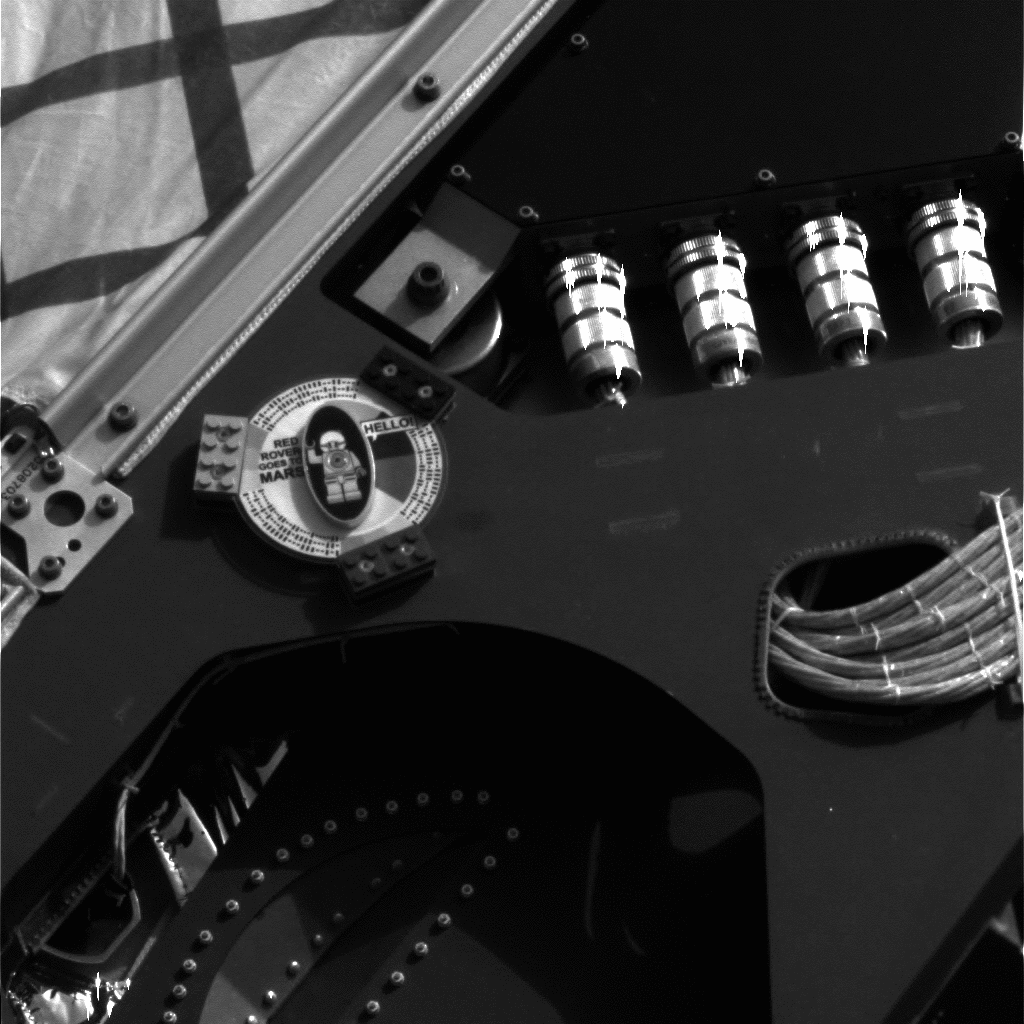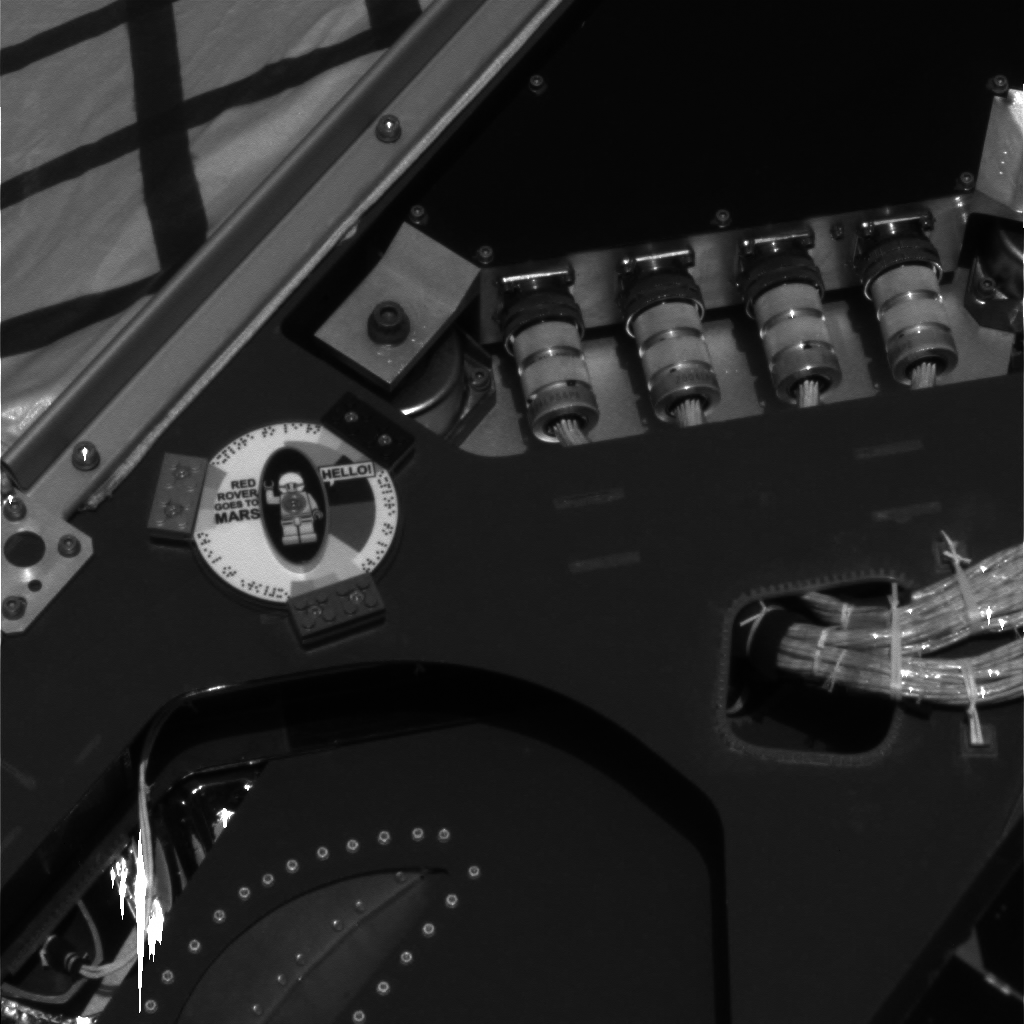Images of the Mars DVD: Crack the Codes
Two DVDs were sent to Mars, one aboard Spirit, and one aboard Opportunity. Both DVDs contained the same list of four million names, but each carries a different secret code around its edge, and a different Astrobot is bolted to each one.
Immediately after landing, Spirit and Opportunity both captured images of the DVDs and sent them back to the millions of people on Earth who were waiting for proof that their names had landed on Mars!


If you want or need clues to help solve the codes, visit the clues page. You will probably need at least some for the Spirit code.
More About the Mars DVD Images
On Sol 2, the rover's second Martian day, mission engineers comanded the Panoramic Camera (Pancam) instrument to capture four images of the DVD assembly. The four images were captured through four different filters: a red filter, a green filter, a blue filter, and an "empty" filter.
To capture these different images, a filter wheel on the Pancam rotated different colored filters into place in front of the camera. The red filter lets only red-colored light pass through to the detector; the green filter lets only green-colored light pass; and the blue filter lets only blue-colored light pass. The empty filter allows all wavelengths of light to pass to the detector, so allows for the sharpest imaging.
(For the curious, the wavelengths on the red, green, and blue filters are 600, 530, and 480 nanometers, respectively. The detector can "see" light in the range from 400 to 1100 nanometers.)


The DVD assembly, which is approximately 3 inches (8 centimeters) in diameter, spans approximately 200 pixels in full resolution Pancam images. However, not all of the Pancam images are returned from the spacecraft at full resolution. The Mars Exploration Rovers can return a lot of data, but the amount of data represented in these images from the highest resolution camera ever sent to the surface of Mars is HUGE. Therefore, in order to save on transmission bandwidth, mission engineers most often return some Pancam images at full resolution, and some Pancam images at only half the resolution, which reduces their file size by a factor of approximately four. Scientists such as the Student Astronauts can then use image processing techniques to combine the different sized images representing different colors into one color image.
The images above were cropped from the full Pancam frames and represent the highest-resolution images of the DVD available from the surface of Mars.


 Explore Worlds
Explore Worlds Find Life
Find Life Defend Earth
Defend Earth

